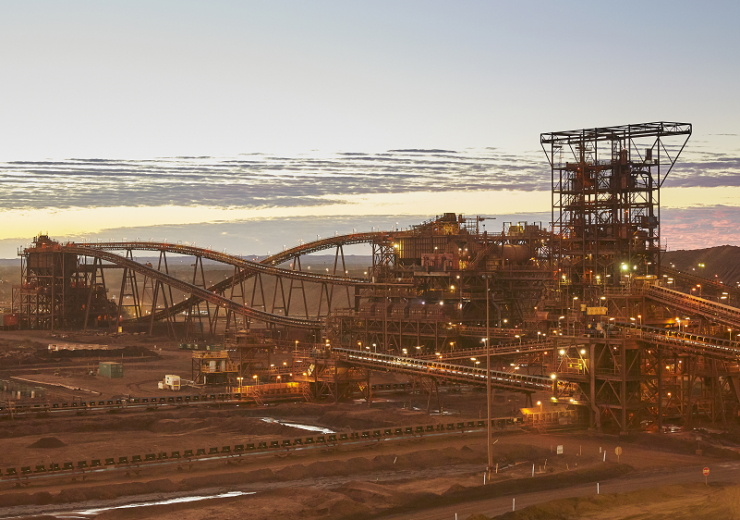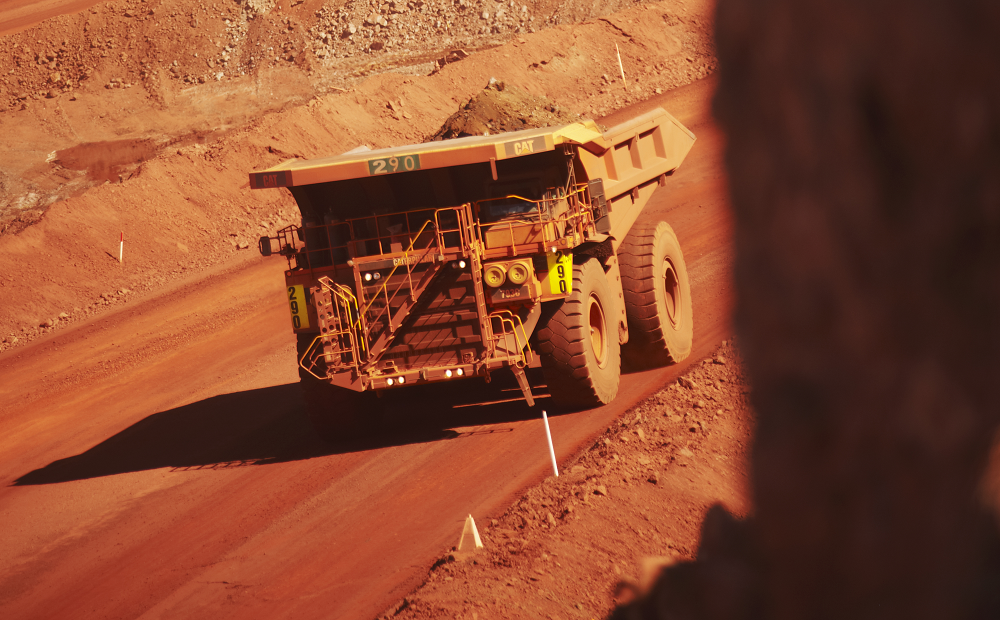Many of the world's largest miners are involved in producing iron ore, with significant amounts of activity based in Western Australia

Christmas Creek iron ore processing facility in Western Australia (Credit: Fortescue Metals Group)
Iron ore producing companies supply a vital component of modern industry, with iron ore used across the world primarily as an ingredient in steel manufacturing.
The metallic ores, which can vary in colour from dark grey and bright yellow, to purples and reds, comprise around 5% of the Earth’s crust and are commonly found in four main types of deposit, the most frequently mined being hematite.
Worldwide production of these ores totalled an estimated 2.4 billion tonnes in 2020, according to data from the US Geological Survey.
This was slightly lower than in 2019, largely due to disruption caused by the coronavirus pandemic – but analysts have forecast a rebound over the coming years as mining operations resume and demand, driven by China’s huge steelmaking industry, makes a resurgence.
Australia possesses the world’s largest-known iron ore reserves with around 50 billion tonnes available to be unearthed, and many of the most productive iron ore miners have based their operations in this country.
Here, NS Energy profiles the top five iron ore producing countries in the world, based on their mining output in 2020.
Top five largest iron ore producing companies in the world in 2020
1. Vale – 300 million tonnes
Brazilian miner Vale was the world’s top producer of iron ore in 2020, with an output totalling just over 300 million tonnes – a small decline from 2019 when it produced 302 million tonnes of the metallic ore.
The Carajás mine in northern Brazil is Vale’s largest operation and is among the biggest iron ore mines in the world.
Brazil ranks second among countries with the world’s largest iron ore reserves, and Vale’s production operations are focused in this region of South America.
Vale’s iron ore production has fallen from former heights in recent years, but the miner is targeting annual production capacity of 400 million tonnes by the end of 2022.
The company is headed by chief executive officer Eduardo Bartolomeo.
2. Rio Tinto – 286 million tonnes
Anglo-Australian miner Rio Tinto produced just under 286 million tonnes of iron ore in 2020 – a 1.7% increase on the previous year.
The company’s iron ore operations are largely based in the Pilbara region of Australia, which is the world’s top iron ore producing country and home to the largest known reserves.
It’s Pilbara operations comprise a network of 16 iron ore mines, four independent port terminals, a 1,700-kilometre rail network and other related infrastructure.
Rio Tinto also has a majority interest in Iron Ore Company of Canada (IOC), which contributed 10.4 million tonnes to its overall production in 2020.
Jakob Stausholm is currently chief executive officer, having replaced former boss Jean-Sébastien Jacques who resigned in 2020 after Rio’s controversial destruction of an aboriginal heritage site in Pilbara during 2020.
3. BHP – 248 million tonnes
Australia-headquartered BHP mined just over 248 million tonnes of iron ore in its financial year ended 30 June 2020, marking a 3.9% annual increase.
In the six months to December 31 2020 – the first half of its 2021 financial year – the company produced 128 million tonnes of iron ore, and has set full-year guidance at 245-255 million tonnes.
Like Rio Tinto, BHP’s iron ore assets are focused in the resource-rich Pilbara region of Western Australia, including five mines, four processing hubs and two port facilities, known collectively as Western Australia Iron Ore (WAIO).
The diversified miner, which is also second among the world’s largest copper mining companies, is headed by CEO Mike Henry, who has been in the role since January 2020.
He succeeded former boss Andrew Mackenzie who has since been appointed chairman of oil major Royal Dutch Shell.

4. Fortescue Metals Group – 204 million tonnes
Australia’s Fortescue Metals Group (FMG) ranks fourth among the world’s largest iron ore producing companies, with output of just over 204 million tonnes in its financial year ended 30 June 2020 – a slight decrease compared to the previous 12 months.
In the first half of its 2021 financial year, the company produced 108.4 million tonnes of iron ore.
Unlike the other companies on this list which have diversified interests across a number of commodities, FMG’s sole focus has historically been on iron ore mining.
However, it is also in the process of broadening its horizons with exploration ventures in other parts of Australia as well as in Ecuador, Argentina, Colombia, Peru, Portugal and Kazakhstan for minerals including copper, gold and lithium.
The miner operates assets across the Pilbara region, including the Chichester and Solomon mining hubs, and it is in the process of developing the Western Hub, which will be home to the Eliwana mine.
Fortescue is headed by chief executive officer Elizabeth Gaines, who has held the position since 2017 and was previously the company’s chief financial officer.
5. Anglo American – 61 million tonnes
Anglo American produced just over 61 million tonnes of iron ore in 2020, down from 65.5 million tonnes in the previous year.
The London-headquartered mining business has two major operations focused on iron ore production – a majority ownership of the Kumba project in South Africa as well as the Minas-Rio operation in Brazil.
The Kumba project comprises two open pit mines – Sishen and Kolomela – with production shipped to China, Japan, Europe, India and the Americas.
Mark Cutifani has been Anglo American CEO since 2013.
